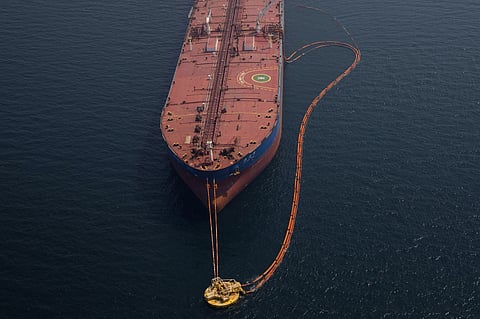Why is Donald Trump angry with India over Russian crude, and what are New Delhi's alternatives?
Ukraine's allies such as the US have repeatedly sought to hobble Russia's export earnings

India is the largest buyer of Russian oil, saving itself billions of dollars on discounted crude.
When war broke out in 2022, India jumped at the opportunity of cheap crude, and imports from Russia surged.
That has infuriated US President Donald Trump, who has threatened India with higher tariffs, prompting New Delhi to brand any potential move "unjustified and unreasonable".
Ukraine's Western allies have repeatedly sought to hobble Russia's export earnings.
But Russia has been able to redirect energy sales away from Europe to other countries, including India and China, ensuring the multibillion-dollar flow of funds has continued.
How much does India import?
India, one of the world's largest crude oil importers, relies on foreign suppliers for more than 85 percent of its oil needs.
New Delhi traditionally relied on Middle East nations.
But since 2022, it has shifted sharply towards discounted Russian crude, taking advantage of a buyer's market created by Western bans on Moscow's exports.
In 2024, Russia accounted for nearly 36 percent of India's total crude oil imports, up from roughly two 2 percent before the war, according to data released by the country's commerce ministry.
At its peak, Russia accounted for more than 40 percent of India's crude imports in 2024.
New Delhi bought approximately 1.8 million barrels of Russian crude per day in 2024. That accounted for around 37 percent of Moscow's total oil exports.
Why does India rely on Russia?
India's foreign ministry said Monday it "began importing from Russia because traditional supplies were diverted to Europe after the outbreak of the conflict".
It also noted that Washington at that time had "actively encouraged such imports by India for strengthening global energy market stability".
The Western sanctions triggered discounts on Russian crude.
That helped Indian refiners save billions of dollars on import costs, keeping domestic fuel prices relatively stable.
Although the price advantage narrowed from around 14 percent in the 2023–24 financial year to about seven percent in 2024–25, Russian crude remains economically attractive for India.
New Delhi insists its purchases have helped keep global crude prices stable, saying that without these imports, global prices could have surged to $120–130 per barrel.
Does India have an alternative?
India still sources crude oil from the Middle East, mainly Iraq and Saudi Arabia.
It accounted for a substantial 45 percent of total imports in 2024, down from the roughly 60 percent before 2022.
"India could in principle find suppliers other than Russia to meet its energy needs relatively easily with little economic impact," Shilan Shah of Capital Economics said in a note.
Logistically, switching suppliers is possible too, Shah argues.
"Virtually all of India's oil purchases from Russia arrive via ship; it would be much more tricky to switch if it was delivered through pipeline," Shah added.
"Indian refineries are able to switch grades relatively easily too."
But none of the alternatives offer the same price advantage.
Sign up for the Daily Briefing
Get the latest news and updates straight to your inbox



